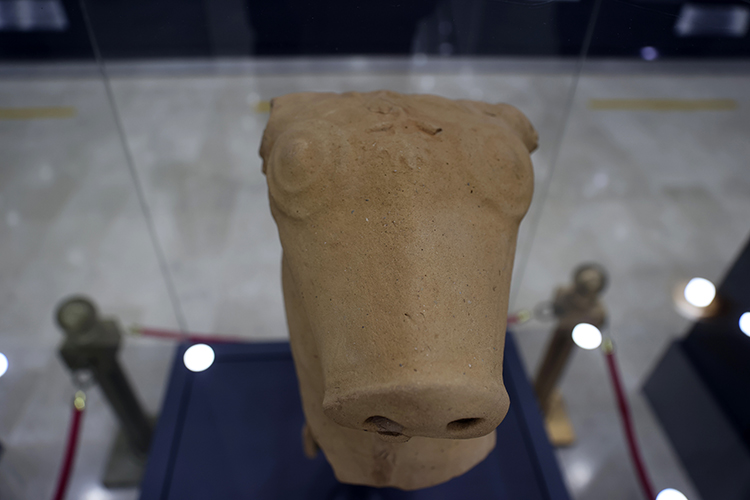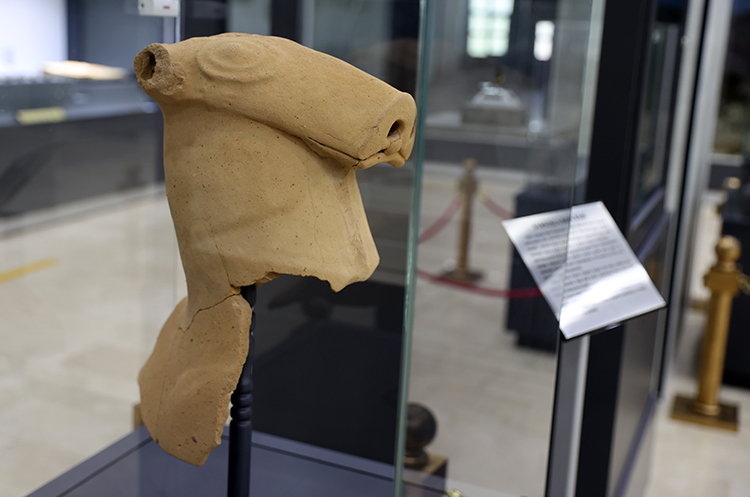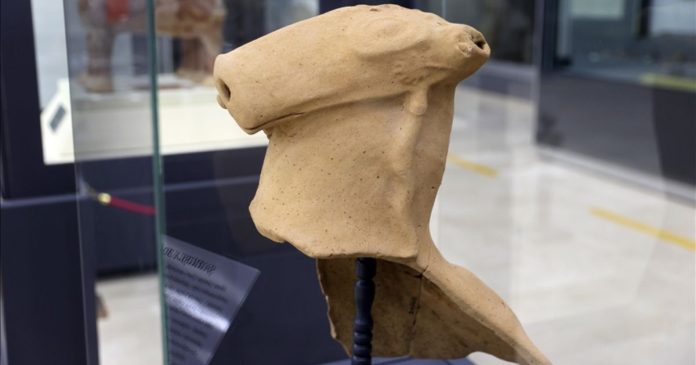A Chance Discovery by the Kızılırmak River
In a moment straight out of the unexpected, a Hittite-era fragment—part of a bull-headed jug—was discovered in the sands of the Kızılırmak River near Şarkışla, Sivas,Türkiye The find occurred about three years ago when an excavator operator noticed an unusual object stuck in the bucket while gathering sand. This fragment, now affectionately known as the “Şarkışla Bull,” is being featured at the Sivas Archaeology Museum, after undergoing careful conservation and restoration.

Form, Function & Scale
The piece is both grand and finely sculpted. Its almond-shaped eyes, upturned nose, tongue protruding, and decorative oak-leaf and acorn motifs framing its forehead evoke the high craftsmanship of the Hittite period . Scholars have identified it as the largest bull-headed test piece ever found—indicative of a massive jug, traditionally known as a “testi,” typically used in ritual libations .
Cultural & Ritual Context
Doç. Dr. Çiğdem Maner of Koç University explains this jug likely originates from the sacred city of Samuha—a Hittite site believed to lie on the shores of the ancient Kızılırmak (known historically as Saruḫa). Samuha was a major center for worshiping the storm god and goddess Ištar, where priests performed libations and festivals by the riverbank . This fragment likely served in such ceremonies, its design facilitating the pouring of liquids through its nostrils and mouth—a practice attested in other Hittite and Assyrian ritual vessels .
Experts date the artifact between the 17th and 12th centuries BCE. Its rounded edges, worn smooth by water, suggest it tumbled along the riverbed for centuries . While only the bull’s head remains, it likely once graced the neck of an entire jug, illuminated during sacred rites.

Symbolism of the Bull
In Hittite art, bulls symbolized strength, fertility, and divine power—often associated with the storm god. Similar bull‑headed vessels—along with stag- and goat-headed counterparts—have been found at sites such as Alacahöyük, Hattusa, and through Anatolian excavations, reinforcing the motif’s religious significance.
Significance & Conservation
This fragment is a monumental find in Anatolian archaeology. Not only is it the largest of its kind in the region, but its preservation and return to a local museum highlight Türkiye’s expanding heritage stewardship . The excavator’s decision to report the find—rather than remove it—sets an encouraging precedent for responsible archaeological practice.
What the Şarkışla Bull Tells Us
| Aspect | Insight |
|---|---|
| Artisanship | Reflects advanced metal clay-sculpting and ritual artistry |
| Religion | Indicates a dynamic cultic scene involving river-centered libations to the storm god and Ištar |
| Continuity | Shows the religious continuity and symbolism in central Anatolia from 17th–12th centuries BCE |
| Conservation | Demonstrates responsible modern discovery and preservation practices |
Conclusion
The Şarkışla Bull has journeyed from a sacred ritual in ancient Samuha to the swirling currents of the Kızılırmak, only to emerge millennia later in modern Sivas. Its conservation and public display enrich our understanding of Hittite religious and artistic culture. We celebrate both the craftsmanship of its creators and the ethical discovery that returned it home. Next time you stroll along a riverbank, remember—history might just be hiding in plain sight.

